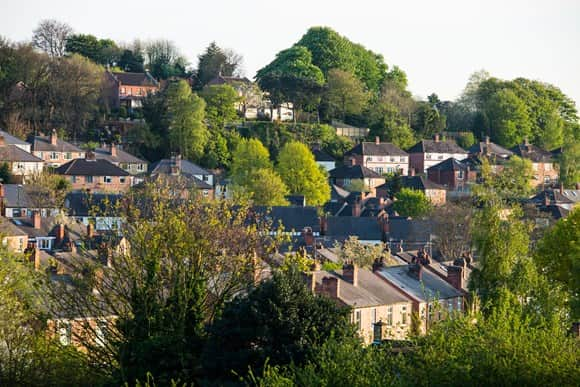Woodland Trust urges council to retro-fit trees into housing estates
and live on Freeview channel 276
The Woodland Trust is urging councils in the Liverpool City Region and across the UK to bring back nature to urban areas by retro-fitting trees into housing estates.
The charity has produced a report - Trees and Woods at the Heart of Nature Recovery in England - that lays out plans to add more greenery to estates with less than 16% tree cover, or 30% canopy cover for new developments, and provide access to greenspace within 10 minutes of everyone’s doorsteps.
Advertisement
Hide AdAdvertisement
Hide AdThe report has been launched to coincide with this week’s Local Government Association (LGA) Conference, when councillors and officers converge to discuss plans for their regions.
The document is designed to help councils and communities write their Local Nature Recovery Strategies and follows the Government’s announcement on Friday that is has made £14million available to the 48 local authorities tasked with leading on drafting the plans. Liverpool City Region Combined Authority is among them.


Darren Moorcroft, chief executive of the Woodland Trust, said: “Trees and woods are critical in creating better, healthier places for people to live and all communities should have access to these benefits. As well as driving nature’s return, tree numbers correlate to improving people’s health and well-being – something that’s being increasingly recognised by leaders across the globe.”
Join the campaign: To help ensure the plans are placed high on agendas, the Woodland Trust is asking people to contact their local authorities via its campaign website. The e-action will demand that local authorities declare a nature crisis. To contact your council and back the e-action, visit woodlandtrust.org.uk/campaigns. To read the report in full, visit woodlandtrust.org/publications
Advertisement
Hide AdAdvertisement
Hide AdLeafless Liverpool: According to separate research by scientists from the University of Sheffield, Liverpool has one of the least ‘green’ urban city centres in Britain. Despite boasting Green Flag Award-winning spaces like English Heritage Grade 1 listed Sefton Park and Grade 2 listed Stanley Park nearby, the city centre ranks in the bottom three across England, Scotland and Wales. Glasgow was ranked the least green, followed by Leeds, Liverpool, Sheffield and then Middlesbrough.
Comment Guidelines
National World encourages reader discussion on our stories. User feedback, insights and back-and-forth exchanges add a rich layer of context to reporting. Please review our Community Guidelines before commenting.
